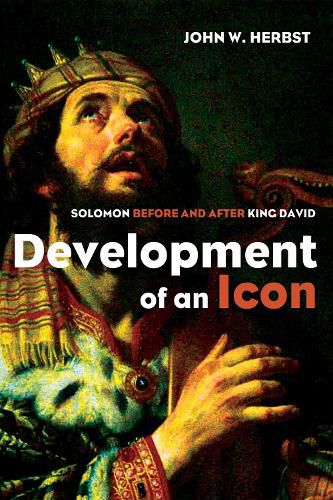Readings Newsletter
Become a Readings Member to make your shopping experience even easier.
Sign in or sign up for free!
You’re not far away from qualifying for FREE standard shipping within Australia
You’ve qualified for FREE standard shipping within Australia
The cart is loading…






This title is printed to order. This book may have been self-published. If so, we cannot guarantee the quality of the content. In the main most books will have gone through the editing process however some may not. We therefore suggest that you be aware of this before ordering this book. If in doubt check either the author or publisher’s details as we are unable to accept any returns unless they are faulty. Please contact us if you have any questions.
The most extensive royal accounts in the Hebrew Bible are those of kings David (the Succession Narrative, usually identified as 2 Sam 9-20 and 1 Kgs 1-2) and Solomon (the Solomon Story, 1 Kgs 3-11). Yet, even though Solomon immediately follows David in the Deuteronomistic History, little has been done to correlate these accounts. But what if these passages were meant to be read together? Utilizing the Double Redaction theory, Herbst proposes that an exilic Deuteronomist inserted the Succession Narrative into the Deuteronomistic History, then revised the Solomon Story in light of this addition. His key contribution was 1 Kings 1-2, a passage designed to connect the two larger sections, highlighting the similarities and differences of the two kings. Interpreting the composition history of 2 Samuel and 1 Kings in this way gives new insight into the Deuteronomist’s views regarding kings and kingship. This approach also solves many of the problems of the Solomon story, in which the narrator appears to simultaneously praise and criticize Solomon. And along the way, Herbst offers new insights into individual passages, further enhancing our understanding of the message of the Deuteronomistic History.
$9.00 standard shipping within Australia
FREE standard shipping within Australia for orders over $100.00
Express & International shipping calculated at checkout
This title is printed to order. This book may have been self-published. If so, we cannot guarantee the quality of the content. In the main most books will have gone through the editing process however some may not. We therefore suggest that you be aware of this before ordering this book. If in doubt check either the author or publisher’s details as we are unable to accept any returns unless they are faulty. Please contact us if you have any questions.
The most extensive royal accounts in the Hebrew Bible are those of kings David (the Succession Narrative, usually identified as 2 Sam 9-20 and 1 Kgs 1-2) and Solomon (the Solomon Story, 1 Kgs 3-11). Yet, even though Solomon immediately follows David in the Deuteronomistic History, little has been done to correlate these accounts. But what if these passages were meant to be read together? Utilizing the Double Redaction theory, Herbst proposes that an exilic Deuteronomist inserted the Succession Narrative into the Deuteronomistic History, then revised the Solomon Story in light of this addition. His key contribution was 1 Kings 1-2, a passage designed to connect the two larger sections, highlighting the similarities and differences of the two kings. Interpreting the composition history of 2 Samuel and 1 Kings in this way gives new insight into the Deuteronomist’s views regarding kings and kingship. This approach also solves many of the problems of the Solomon story, in which the narrator appears to simultaneously praise and criticize Solomon. And along the way, Herbst offers new insights into individual passages, further enhancing our understanding of the message of the Deuteronomistic History.